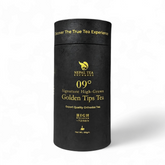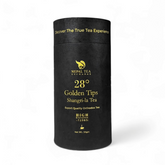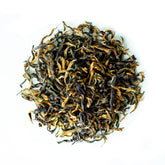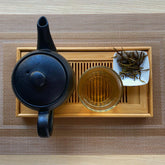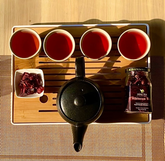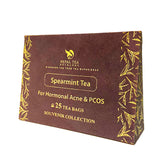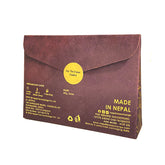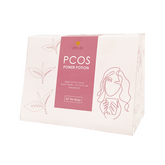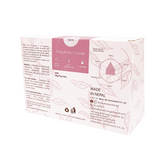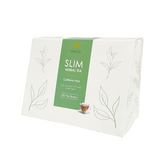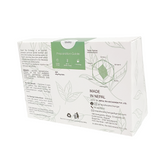White Teas of Nepal : All You Need to Know About

White tea is a type of tea that has been growing in popularity over the years, thanks to its unique flavor, minimal processing, and potential health benefits. It is made from the leaves and buds of the tea plant, Camellia Sinensis, that are picked before they are fully open and are covered with fine white hairs, which gives the tea its name. In this article, we will explore the world of Nepali white tea, its history, production, taste, and health benefits.
The History of Nepali White Tea
Nepal has been producing tea for over 150 years, but it wasn't until the early 2000s that the country began producing white tea. The first white tea plantation was established in Ilam, a hilly region in eastern Nepal, in 2001.
The initial response to Nepali white tea was mixed, with some tea enthusiasts praising its unique taste and others finding it too mild. However, over the years, Nepali white tea has gained popularity, and today it is considered one of the finest white teas in the world.
The Production Process of Nepali White Tea
Nepali white tea is made from the youngest and freshest buds of the tea plant, which are picked early in the morning before the sun rises. The tea leaves are then withered in the sun or in a temperature-controlled room to reduce their moisture content.
The withered leaves are then lightly roasted or baked to stop the oxidation process. This minimal processing is crucial in bringing out the natural flavors and aromas of the tea, which are delicate and subtle.
The production process of Nepali white tea is a delicate one that requires skill and expertise. The tea leaves are handled with care to avoid any damage or bruising, which can affect the quality of the final product.
The Taste of Nepali White Tea
Nepali white tea has a delicate, subtle, and slightly sweet taste, with hints of floral or fruity notes. The taste of Nepali white tea is influenced by several factors, including the altitude at which the tea is grown, the soil type, and the weather conditions.
Nepal has a unique geography that makes it an ideal place for growing tea. The country's hilly terrain, fertile soil, and temperate climate provide the perfect conditions for growing high-quality tea. Nepali white tea is grown at an altitude of 1,000 to 2,000 meters above sea level, which gives it a unique flavor and aroma.
Want to try White Tea. Check our teas.
Types of Nepali White Tea
There are several different types of Nepali white tea, each with its own unique flavor profile. Some of the most popular types of Nepali white tea include:
-
Silver Needle: This is considered the highest quality white tea. It is made only from the young buds of the tea plant, which are covered in fine white hairs. Silver Needle has a delicate, sweet, and slightly floral taste, with a smooth and silky texture.
-
White Peony: This type of white tea is made from the buds and first leaves of the tea plant. It has a slightly stronger flavor than Silver Needle, with a slightly earthy and nutty taste. White Peony also has a smooth and silky texture, with a light golden color.
Health Benefits of Nepali White Tea
Antioxidant-rich
Nepalese white tea is loaded with antioxidants, which provide the body with protection from free radicals that can cause damage. Furthermore, antioxidants can reduce inflammation and contribute to overall health improvement.
Weight loss facilitator
Nepalese white tea can stimulate weight loss by raising the metabolic rate and augmenting the oxidation of fat stores. In addition, this tea can mitigate appetite and quell cravings, promoting the consumption of a healthful diet.
Cardiovascular health booster
Nepalese white tea promotes cardiovascular health by mitigating the risk of heart disease and stroke. It can effectuate a reduction in blood pressure, lower cholesterol levels, and enhance circulation.
Immunity enhancer
The consumption of Nepalese white tea can amplify immune system function by augmenting the production of white blood cells. As a result, the body is fortified against infection and illness.
Skin health improver
Nepalese white tea can ameliorate the condition of the skin by lessening inflammation and safeguarding against damage caused by ultraviolet radiation. This tea can also stimulate collagen production, resulting in a reduction of the visible signs of aging.
FAQs
- Is Nepali white tea similar to Chinese white tea?
Yes, Nepali white tea is similar to Chinese white tea in terms of its processing and flavor profile. However, Nepali white tea has its own unique taste and aroma, which is influenced by the country's geography and weather conditions.
- How do you prepare Nepali white tea?
To prepare Nepali white tea, use fresh, cold water and heat it to around 175°F (80°C). Steep the tea for 3-5 minutes, depending on your preference. You can drink Nepali white tea plain, or you can add honey or lemon to enhance its flavor.
- Where can I buy Nepali white tea?
Nepali white tea can be purchased from specialty tea shops or online retailers. It is important to purchase Nepali white tea from a reputable source to ensure that you are getting a high-quality product.
- Can I drink Nepali white tea every day?
Yes, you can drink Nepali white tea every day, as it is a healthy and low-caffeine beverage. However, it is always recommended to consume any beverage in moderation to avoid adverse effects.
- Does Nepali white tea contain caffeine?
Yes, Nepali white tea contains caffeine, but in lower amounts compared to other teas. It is a good option for those who are sensitive to caffeine or looking for a low-caffeine alternative to other teas.


